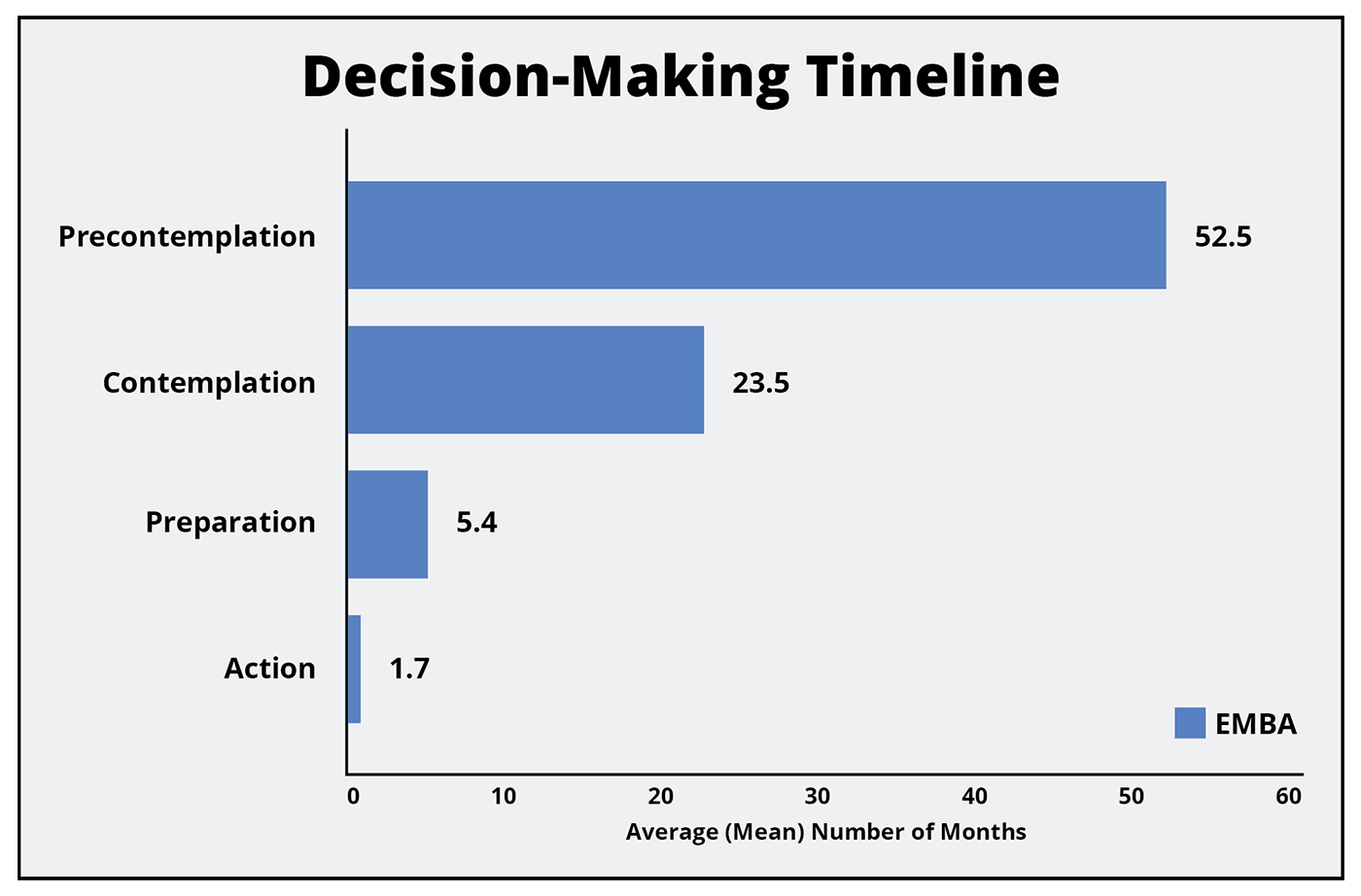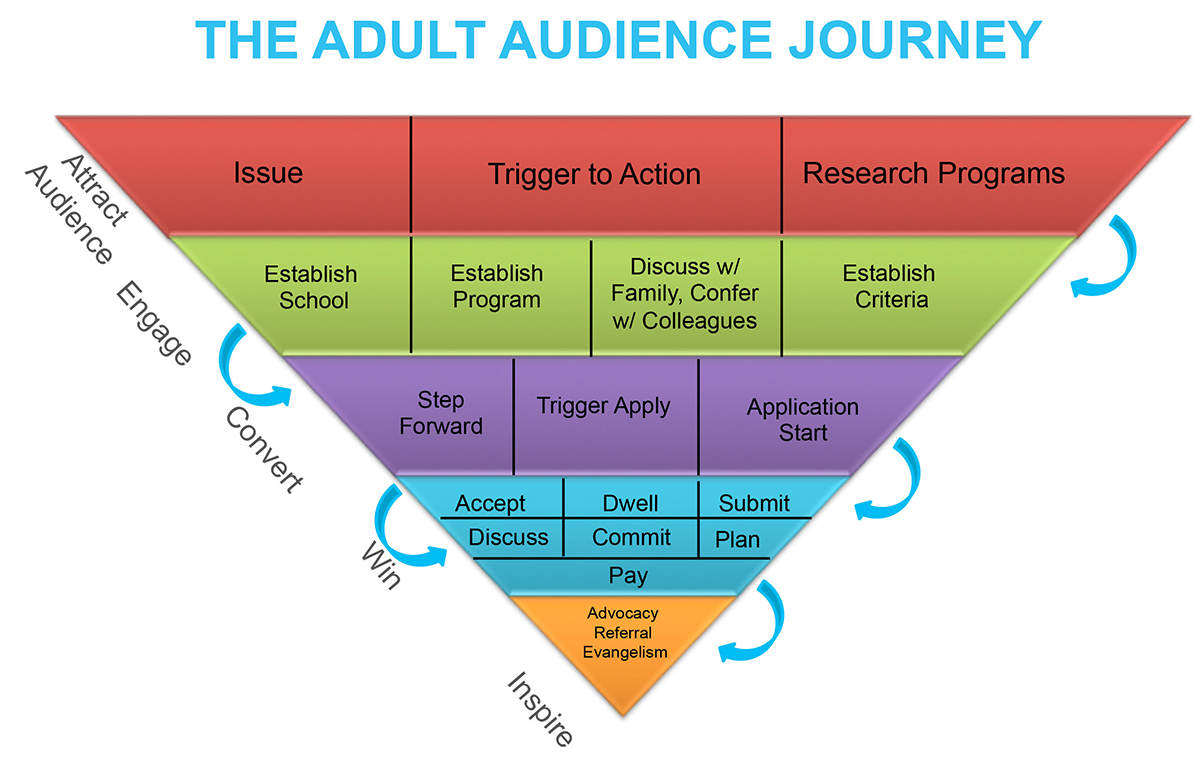
The decision-making process for a prospect to enroll in an Executive MBA program is painfully long. Statistics show that this process can take up to two years. So what can you do to speed up the process? Develop — and implement — a pull-through digital enrollment marketing strategy.
Source: GMAC mba.com Prospective Students Survey 2014
Audience targeting is a key component of any successful marketing strategy, online or offline. Don’t throw a wide net; targeting will produce better results. Why? Because you will be delivering relevant content. If you bid on keywords that are too broad, you may be wasting your online advertising dollars. To promote a Healthcare EMBA program, for instance, both the keywords and the ad messaging must be specific. Otherwise, you may receive a great quantity of leads but not quality leads. Quality leads will be more interested in your EMBA program and, therefore, more likely to commit sooner.
Timing is everything. While you want your online ads to appear prior to your program deadlines, you also want prospects to see them at key stages in their decision-making process. Keep in mind that, although these two timelines may intersect at certain points, the overlap may be minimal. That’s why you should schedule ads throughout the calendar year, not just based on the academic calendar.
So what are some of the stages that prospects will go through on their path to enrolling? Here are a few common stages:
1. Considering an EMBA
2. Deciding what type of EMBA program
3. Seeking information
4. Applying
5. Enrolling
Just because you get a prospect into the funnel, that doesn’t mean it will be smooth sailing. Bottlenecks can pop up anywhere:
• Cost of program (more important to self-financed than employer-sponsored prospects)
• Concerns regarding work-life balance
• Questioning ROI of EMBA degree
Your program positioning and digital marketing strategy must address and overcome these and other obstacles. You can kill two birds with one stone, so to speak, by offering incentives for early enrollment. First, financial incentives will help to bring down the overall cost of an EMBA. Second, incentives can help shorten the decision-making process.
What kinds of incentives can you offer? That depends on your program’s pricing and operations budget. Some programs offer scholarships, waive application or GMAT fees (some programs waive the GMAT altogether), or pay for textbooks. Other programs offer incentives to specific groups, such as military veterans.
If you find that work-life balance is an issue for prospects, take a look at your program format. EMBA programs must be willing to rethink traditional models in order to appeal to professionals with limited bandwidth. Programs with flexible scheduling will have an advantage over those with rigid formats, and may prompt commitments earlier in the decision-making process.
Your digital marketing strategy must demonstrate program ROI. How? Include testimonials on ROI from current students and alumni. If favorable, compare your tuition to that of other EMBA programs. Survey your alumni to find out how they moved up the career ladder (and how quickly) and how much their salaries increased post-graduation. Collect stats, and then use them to your advantage.
Digital enrollment marketing is more than just “setting and forgetting” a search engine marketing (SEM) campaign. Your strategy should be made up of many components: keyword optimization, banner and search ads, landing pages, search engine optimized (SEO) web content, social media advertising, retargeting campaigns and more. Your online campaign also should be consistent in visuals and messaging with offline marketing.
Don’t forget to monitor your campaigns. Tracking results will reveal which components worked best, and which fell flat. Then tweak your campaigns for optimal results.
A coordinated, consistent, ongoing marketing effort will produce the best results and, ultimately, shorten the prospect’s decision-making timeline.
By Darcy Grabenstein, senior copywriter at Annodyne



